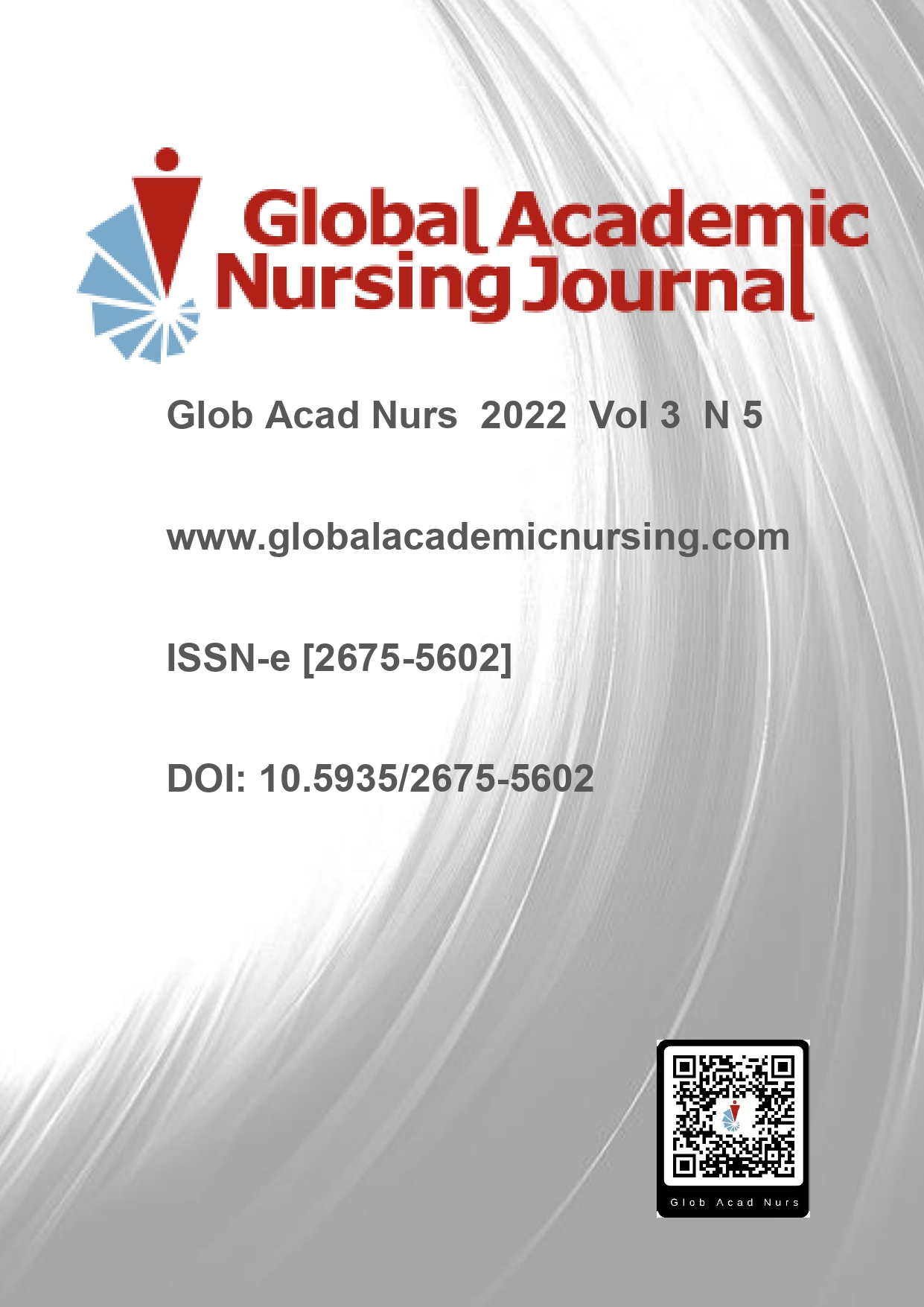Abstract
This work built and tested a high-fidelity clinical simulation scenario for the management of cardiopulmonary arrest (CPA) by nursing students. Miller's Pyramid was used to assess competences, applying the CPA care flowchart as a tool, according to the guidelines of the American Heart Association 2020. The simulation had 18 students from the 7th semester of the night nursing course, separated into five students in attendance and 13 students in the anteroom during the simulation. Once the scenario was over, the students were gathered in the anteroom for the debriefing. Students critically discussed the care provided, connecting the practice of CRA care by a nurse with the previously discussed theoretical context. When identifying positive points and opportunities for improvement, two students considered the scenario as an emotional trigger, given the clinical case presented. The simulated scenario proved to be an active methodology tool of relevance in health education, and the elaboration should be widely planned so that time is sufficient and the learning objectives are developed. The simulation made it possible to connect students with the object of knowledge and with the simulated patient, favoring cognitive, metacognitive, motivational and affective processes.
References
Baker E, Clark LL. Biopsychopharmacosocial approach to assess impact of social distancing and isolation on mental health in older adults. Brit J Commun Nurs. 2020;25(5):231-238. DOI: 10.12968/bjcn.2020.25.5.231
Lei YY, Zhu L, Sa YTR, Cui X-S. Effects of high-fidelity simulation teaching on nursing nursing students’ knowledge, professional skills and clinical ability: A Meta-analysis and systematic review. Nurse Educ Pract. 2022;60:103306. DOI: 10.1016/j.nepr.2022.103306
Choi YJ, Um YJ. The effects of a home-visit nursing simulation for older people with dementia on nursing students' communication skills, self-efficacy, and critical thinking propensity: Quantitative research. Nurse Educ Today. 2022;119:105564. DOI: 10.1016/j.nedt.2022.105564
Chabrera C, Dobrowolska B, Jackson C, Kane R, Kasimovskaya N, Kennedy S et al. Simulation in nursing education programs: findings from an international exploratory study. Clinic Simul Nurs. 2021;59:23-31. https://doi.org/10.1016/j.ecns.2021.05.004
Culyer LM, Jatulis LL, Cannistraci P, Brownell CA. Evidenced-based teaching strategies that facilitate transfer of knowledge between theory and practice: what are nursing faculty using? Teach Learn Nurs. 2018;13(3):174-179. https://doi.org/10.1016/j.teln.2018.03.003
Eyikara E, Baykara ZG. The importance of simulation in nursing education. World J Educ Technol. Curr Issues [Internet]. 2017 [acesso em 02 dez 2022];9(1):02-07. https://files.eric.ed.gov/fulltext/EJ1141174.pdf
Haukedal TA, Reierson IÅ, Hedeman H, Bjørk IT. The impact of a new pedagogical intervention on nursing students’ knowledge acquisition in simulation-based learning: A quasi-experimental study. Nurs Res Pract. 2018:7437386. https://doi.org/10.1155/2018/7437386
Kim J, Park JH, Shin S. Effectiveness of simulation-based nursing education depending on fidelity: a meta-analysis. BMC Med Educ. 2016;16:152. https://doi.org/10.1186/s12909-016-0672-7
Smith MB, Macieira TG, Bumbach MD, Garbutt SJ, Citty SW, Stephen A et al. The use of simulation to teach nursing students and clinicians palliative care and end-of-life communication: a systematic review. Am J Hosp Palliat Care. 2018;35(8):1140-1154. DOI: 10.1177/1049909118761386
Kardong-Edgren S. Thoughts on the evolution of unexpected death in simulation. Clinic Simul Nurs. 2015;11(7):317. DOI:10.1016/j.ecns.2015.05.002
Issenberg SB, McGaghie WC, Petrusa ER, Gordon DL, Scalese RJ. Features and uses of high-fidelity medical simulations that lead to effective learning: a BEME systematic review. Med Teach. 2005;27(1):10-28. DOI: 10.1080/01421590500046924
Robinson-Smith G, Bradley PK, Meakim C. Evaluating the use of standardized patients in undergraduate psychiatric nursing experiences. Clinic Simul Nurs. 2009;5(6):e203-e211. https://doi.org/10.1016/j.ecns.2009.07.001
Borenstein M, Hedges LV, Higgins JP, Rothstein HR. Introduction to meta-analysis. 2nd ed. New York: John Wiley & Sons; 2021.
Shin S, Park JH, Kim JH. Effectiveness of patient simulation in nursing education: meta-analysis. Nurse Educ Today. 2015;35(1):176-182. DOI: 10.1016/j.nedt.2014.09.009
Kim JH, Park IH, Shin S. Systematic review of Korean studies on simulation within nursing education. J Korean Acad Soc Nurs Educ. 2013;19(3):307-319. https://doi.org/10.5977/jkasne.2013.19.3.307
Cavalcante BLL, Lima UTS. Relato de experiência de uma estudante de Enfermagem em um consultório especializado em tratamento de feridas. Journal of Nursing and Health. 2012;2(1):94-103. https://doi.org/10.15210/jonah.v2i1.3447
American Heart Association. Guidelines for Cardiopulmonary Resuscitation and Emergency Cardiovascular Care [Internet]. [acesso em 20 mar 2020]. Disponível em: https://eccguidelines.heart.org/wp-content/uploads/2019/11/2019-Focused-Updates_ Highlights_PTBR.pdf
Santana, ER, Piacezzi, LH V, Lopes, MC B., Batista, REA, Vancini-Campanharo, CR,Góis, AFTD. Construção e validação de cenário de simulação de transporte intra-hospitalar. Einstein. 2021;19:1-9. https://doi.org/10.31744/einstein_journal/2021AO5868
Magalhães VDN, Lima DS, Morais ÊM, Miura CRM, Oliveira NA. O impacto na assistência à COVID-19 no ciclo gravídico-puerperal. Glob Acad Nurs. 2022;3(Sup.1):e245. https://doi.org/10.5935/2675-5602.20200245

This work is licensed under a Creative Commons Attribution-NonCommercial-NoDerivatives 4.0 International License.
Copyright (c) 2022 Global Academic Nursing Journal

